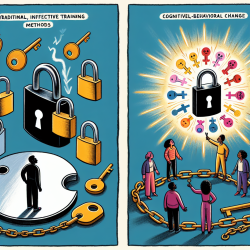Introduction
Suicide is a leading cause of death among adolescents in the United States, and schools have been at the forefront of prevention efforts for over two decades. However, few programs have been rigorously evaluated for their effectiveness. The Signs of Suicide (SOS) prevention program stands out as a universal school-based intervention that has demonstrated significant reductions in self-reported suicide attempts. This blog will explore the findings from the research article "Evaluating the SOS suicide prevention program: a replication and extension" and how practitioners can leverage these insights to enhance their suicide prevention strategies.
The SOS Program: A Closer Look
The SOS program, developed by Screening for Mental Health, Inc., combines two prominent suicide prevention strategies: raising awareness of suicide and its related issues and screening for depression and other risk factors. The program's core message is that suicide is linked to mental illness, particularly depression, and not a normal reaction to stress. It encourages students to respond to signs of suicide with the ACT steps: Acknowledge, Care, and Tell.
Key Findings from the Study
- Reduction in Suicide Attempts: The study found that students who participated in the SOS program were approximately 40% less likely to report a suicide attempt compared to those in the control group.
- Improved Knowledge and Attitudes: Participants demonstrated greater knowledge of depression and suicide and more adaptive attitudes towards these issues.
- Diverse Impact: The program was effective across different races, ethnicities, genders, and ages, highlighting its utility as a universal prevention program.
Implications for Practitioners
Practitioners can draw several key lessons from the study:
- Implement Evidence-Based Programs: The SOS program's success underscores the importance of using evidence-based interventions in school settings.
- Focus on Awareness and Screening: Raising awareness and screening for depression are crucial components of effective suicide prevention strategies.
- Adapt to Diverse Populations: Programs should be adaptable to diverse student populations to maximize their impact.
Encouraging Further Research
While the SOS program has shown promising results, there is a need for further research to explore long-term effects and ways to enhance help-seeking behavior among students. Practitioners are encouraged to stay informed about the latest research and consider participating in studies to contribute to the growing body of knowledge on suicide prevention.
Conclusion
The SOS program is a powerful tool for reducing suicidal behavior among high school students. By implementing such evidence-based programs, schools can make significant strides in preventing suicide and supporting the mental health of their students. For those interested in delving deeper into the research, the original paper provides a comprehensive analysis of the program's effectiveness.
To read the original research paper, please follow this link: Evaluating the SOS suicide prevention program: a replication and extension.










